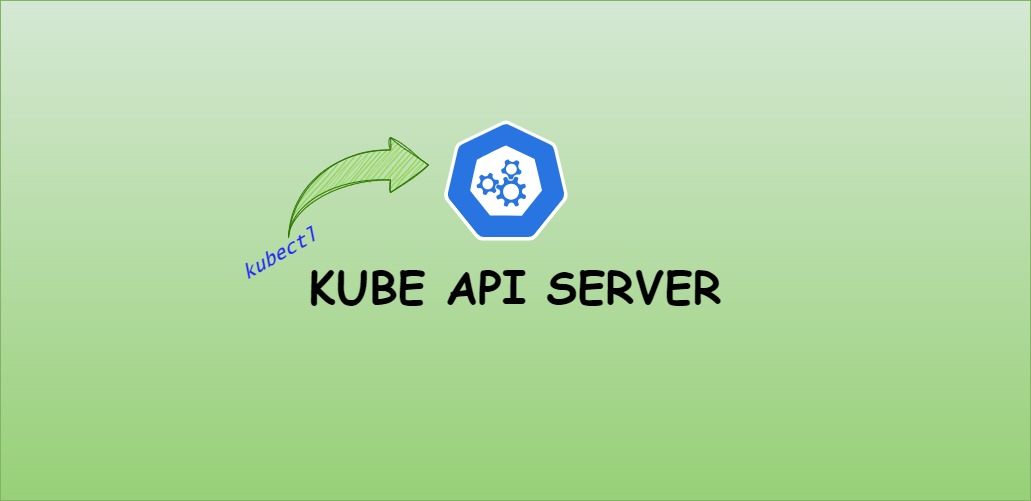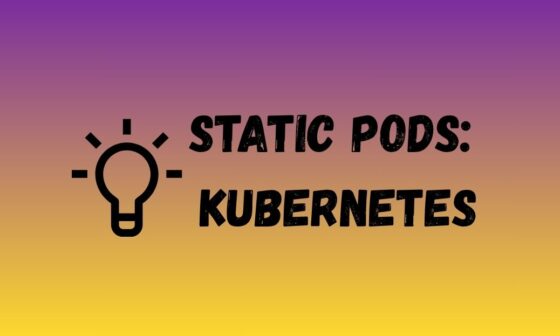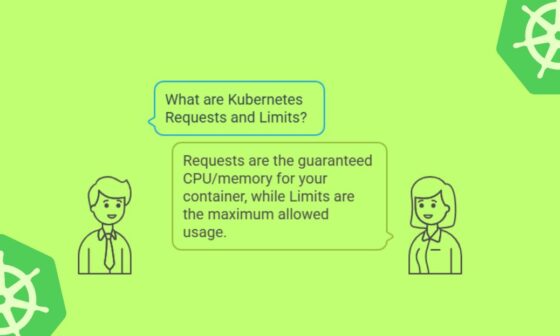The Kubernetes API Server, commonly referred to as kube-apiserver, is a cornerstone of the Kubernetes control plane. It serves as the central interface for managing Kubernetes clusters, orchestrating the interactions between users, applications, and the cluster’s components. In this article, we’ll delve into its architecture, functionality, and how it ensures efficient and secure cluster management.
What is kube-apiserver?
At its core, kube-apiserver is a RESTful API server that acts as the front door to the Kubernetes cluster. It provides the mechanisms for defining and managing all Kubernetes resources, such as Pods, Services, Deployments, and more. Every operation from spinning up a Pod to scaling a Deployment is routed through this critical component.
Key Responsibilities:
- Cluster Gateway: Handles all incoming requests to the Kubernetes cluster.
- Authentication and Authorization: Ensures that only valid, authorized users and applications can access the cluster.
- Validation and Admission: Validates API requests and enforces policies through admission controllers.
- Data Persistence: Stores and retrieves cluster state from etcd, the distributed key-value store.
- Communication Hub: Facilitates interaction between other control-plane components and worker nodes.
How kube-apiserver Works
Request Flow
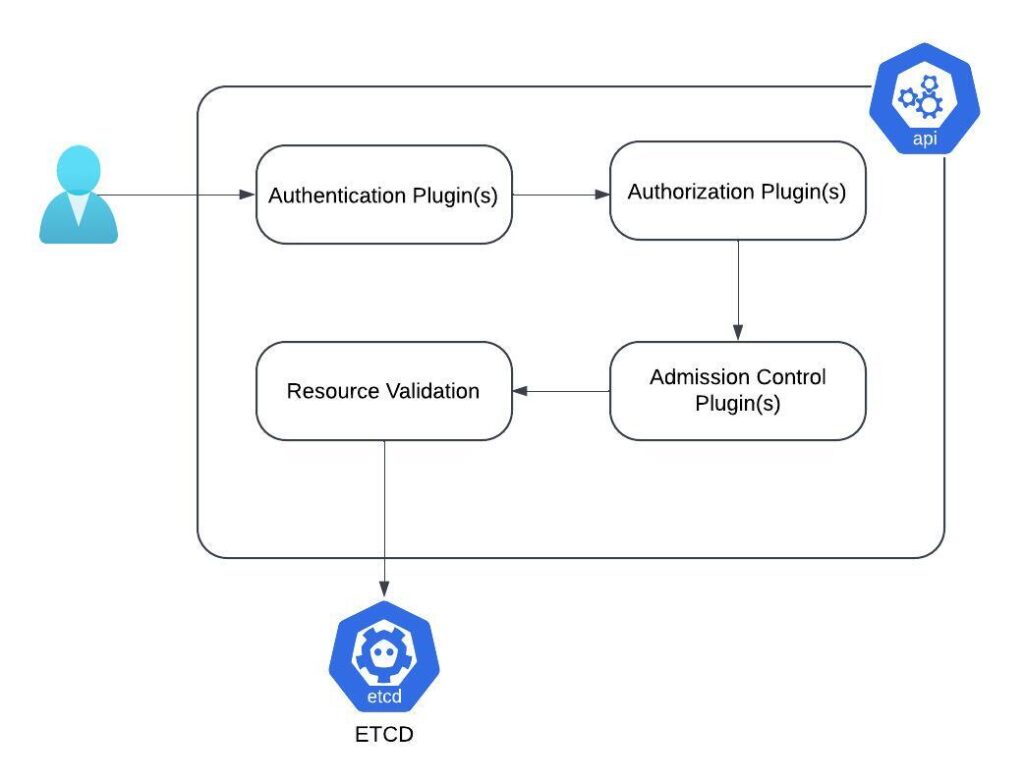
When a client such as kubectl or a Kubernetes Dashboard sends a request, it follows this flow:
- Authentication: The API server verifies the identity of the requester via mechanisms like client certificates, bearer tokens, or OpenID Connect.
- Authorization: Once authenticated, the server checks if the entity has the necessary permissions using policies like Role-Based Access Control (RBAC).
- Admission Control: Admission controllers intercept the request to enforce specific policies, such as resource quotas or security constraints.
- Validation: The request is validated for syntax and schema correctness.
- Execution: If the request passes all checks, the desired state is updated in etcd, and relevant components are notified.
For a deeper dive into Kubernetes architecture, check out our Understanding the Components of Kubernetes Architecture
Communication with etcd
All cluster state data such as node information, pod specifications, and configuration details is stored in etcd. kube-apiserver is the sole entity that interacts directly with etcd, ensuring consistency and reliability.
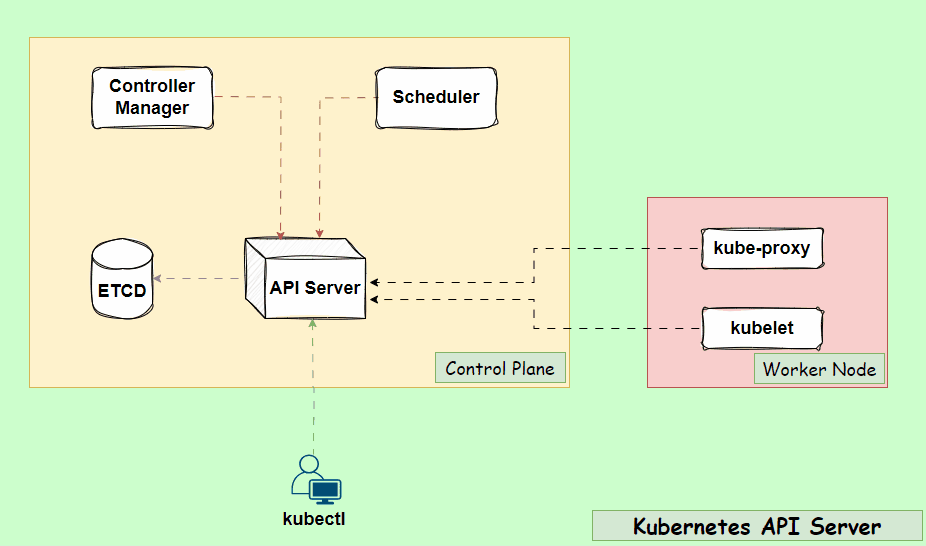
Exposing APIs
The API server provides endpoints for every Kubernetes resource. For example:
/api/v1/pods: Lists or manages pods./apis/apps/v1/deployments: Handles deployments. These APIs follow a declarative model, allowing users to define the desired state of resources.
For a detailed exploration of etcd in Kubernetes, check out our Understanding etcd in Kubernetes
Core Features of kube-apiserver
Authentication and Authorization
- Authentication: Supports various mechanisms, including client certificates, bearer tokens, and external identity providers.
- Authorization: Implements RBAC and attribute-based access control (ABAC) to ensure fine-grained access.
Admission Controllers
Admission controllers are plug-ins that validate or modify requests after authentication but before they are persisted. Examples include:
- PodSecurityPolicy: Enforces security-related policies on pods.
- ResourceQuota: Limits resource usage within namespaces.
API Versioning
To ensure compatibility and smooth upgrades, kube-apiserver supports multiple API versions (e.g., v1, v1beta1). Deprecated APIs are phased out gradually, with clear deprecation notices.
Horizontal Scalability
In production environments, multiple instances of kube-apiserver run behind a load balancer, ensuring high availability and load distribution.
Real-World Example: kubectl Interaction
Let’s break down what happens when you run kubectl get pods:
- Request:
kubectlsends aGETrequest to kube-apiserver (e.g.,GET /api/v1/namespaces/default/pods). - Processing: kube-apiserver authenticates, authorizes, and validates the request.
- Data Retrieval: The API server fetches the list of pods from etcd.
- Response: The data is formatted and returned to
kubectlfor display.
The Kubernetes API Server is the central orchestrator of cluster operations. By handling authentication, resource management, and communication, kube-apiserver ensures the seamless functioning of Kubernetes clusters.
